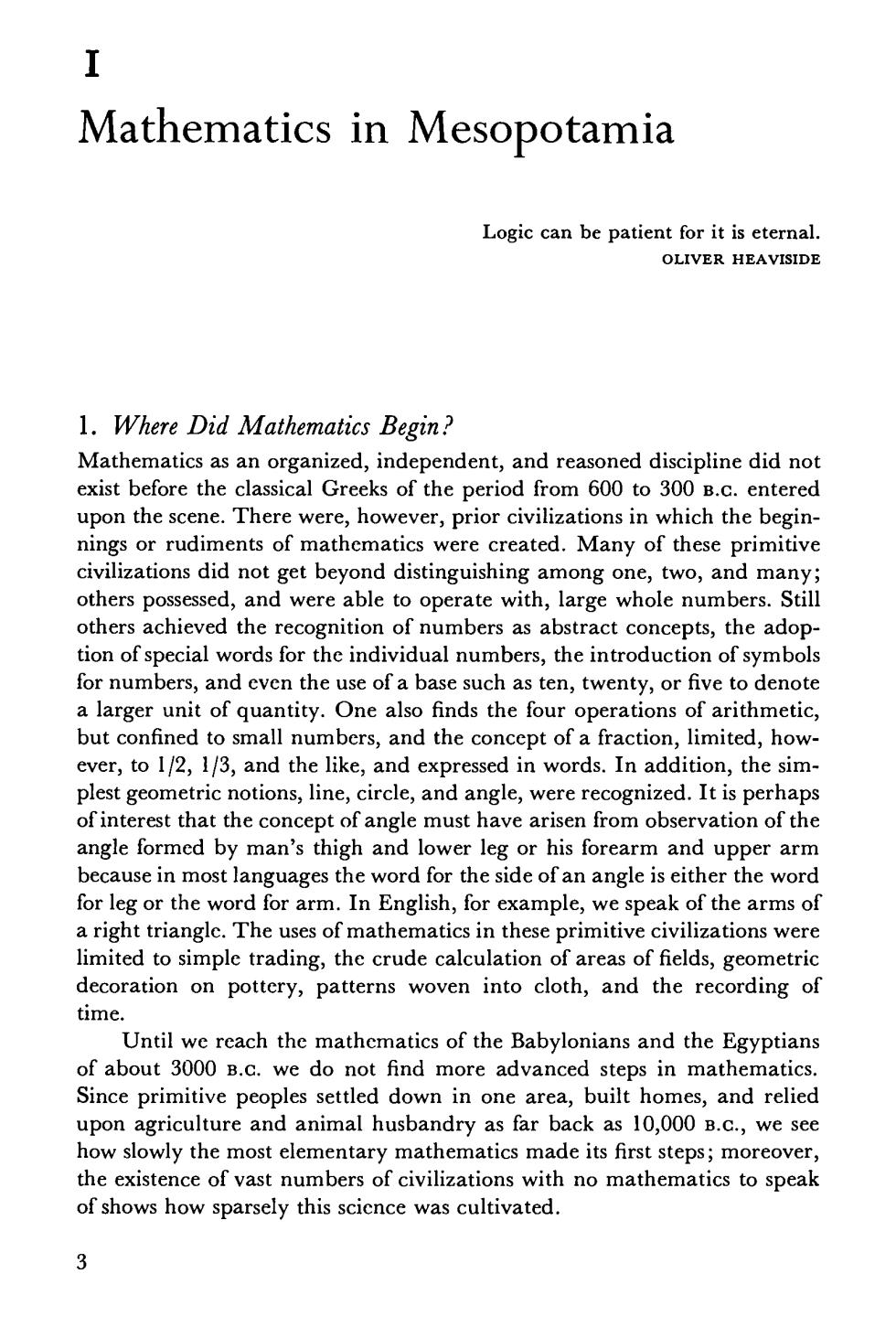正在加载图片...

I Mathematics in Mesopotamia Logic can be patient for it is eternal. OLIVER HEAVISIDE 1.Where Did Mathematics Begin? Mathematics as an organized,independent,and reasoned discipline did not exist before the classical Greeks of the period from 600 to 300 B.c.entered upon the scene.There were,however,prior civilizations in which the begin- nings or rudiments of mathematics were created.Many of these primitive civilizations did not get beyond distinguishing among one,two,and many others possessed,and were able to operate with,large whole numbers.Still others achieved the recognition of numbers as abstract concepts,the adop- tion of special words for the individual numbers,the introduction of symbols for numbers,and even the use of a base such as ten,twenty,or five to denote a larger unit of quantity.One also finds the four operations of arithmetic, but confined to small numbers,and the concept of a fraction,limited,how- ever,to 1/2,1/3,and the like,and expressed in words.In addition,the sim- plest geometric notions,line,circle,and angle,were recognized.It is perhaps of interest that the concept of angle must have arisen from observation of the angle formed by man's thigh and lower leg or his forearm and upper arm because in most languages the word for the side of an angle is either the word for leg or the word for arm.In English,for example,we speak of the arms of a right triangle.The uses of mathematics in these primitive civilizations were limited to simple trading,the crude calculation of areas of fields,geometric decoration on pottery,patterns woven into cloth,and the recording of time. Until we reach the mathematics of the Babylonians and the Egyptians of about 3000 B.c.we do not find more advanced steps in mathematics. Since primitive peoples settled down in one area,built homes,and relied upon agriculture and animal husbandry as far back as 10,000 B.c.,we see how slowly the most elementary mathematics made its first steps;moreover. the existence of vast numbers of civilizations with no mathematics to speak of shows how sparsely this scicnce was cultivated